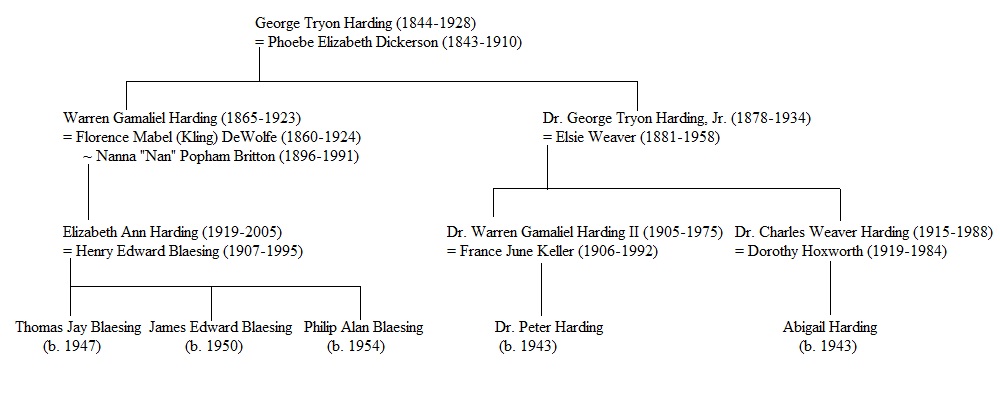
I was fascinated by the story released in The New York Times last Wednesday regarding the DNA research to help establish that Warren G. Harding had had a child with his mistress Nan Britton. Continue reading The Harding DNA Study

I was fascinated by the story released in The New York Times last Wednesday regarding the DNA research to help establish that Warren G. Harding had had a child with his mistress Nan Britton. Continue reading The Harding DNA Study
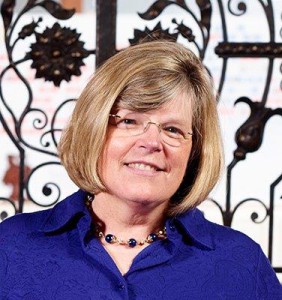 Recently a colleague mentioned a web-based series of interactive discussions called “Windows to the Past: Discovering History Through Tangible Things,” in which “participants will assess fascinating objects . . . to see how any material thing, when examined closely, can be a link between the present and past.”
Recently a colleague mentioned a web-based series of interactive discussions called “Windows to the Past: Discovering History Through Tangible Things,” in which “participants will assess fascinating objects . . . to see how any material thing, when examined closely, can be a link between the present and past.”
Reading this description made me think about how often such items turn up in the family histories we hear and read: the piece of jewelry, the silver, the diary, the clock, the clothing. . . Continue reading Objects and their history
 Each Early New England Families Study Project sketch is an article by itself, so full bibliographic citations are given the first time a source is used, with short form citations thereafter. I have a Word file with the full citation for every source I have used (which grows with each new sketch), and I can “cut and paste” these into footnotes without having to retype. This is my manual version of the bibliographic and footnote options that come with most genealogical database programs these days. Continue reading Composition: Part Three
Each Early New England Families Study Project sketch is an article by itself, so full bibliographic citations are given the first time a source is used, with short form citations thereafter. I have a Word file with the full citation for every source I have used (which grows with each new sketch), and I can “cut and paste” these into footnotes without having to retype. This is my manual version of the bibliographic and footnote options that come with most genealogical database programs these days. Continue reading Composition: Part Three
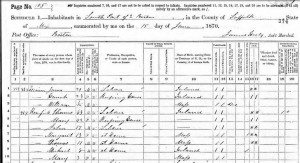
My great-great-grandmother, Margaret Kenefick, was born in Boston on 11 February 1857, the daughter of Irish immigrants Thomas and Mary Kenefick. When I began searching for the family in Boston, I turned to the 1860 Census, but was surprised when I could not locate the Keneficks in Massachusetts. Continue reading Why did they go back?
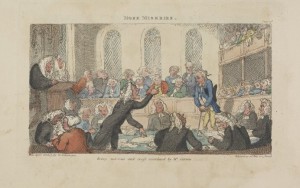
“If any persons or persons within his Majesties Dominions of England and Wales, being married, or which hereafter shall marry, do at any time after the end of the session of this present Parliament, marry any person or persons, the former husband or wife being alive … then every such offence shall be felony. Provided always, that neither this Act, nor anything therein contained, shall extend to any person or persons whose husband or wife shall be continually remaining beyond the seas by the space of seven years together, or whose husband or wife shall absent him or herself the one from the other by the space of seven years together, in any parts within his Majesties Dominions, the one of them not knowing the other to be living within that time.”1 Continue reading Bigamous marriages
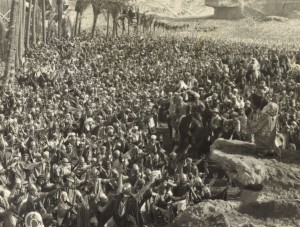
Ben-Hur: A Tale of the Christ (1925) was one of the great spectacles of the silent period; it was also one of the first movies to be produced by the newly amalgamated Metro–Goldwyn–Mayer film corporation. The uncredited cast list reads like a Hollywood Who’s Who of the 1920s (and later): among the (future) stars said to have participated in the film are John and Lionel Barrymore, Gary Cooper, Joan Crawford, Marion Davies, Douglas Fairbanks (Sr.), Clark Gable, Janet Gaynor, John Gilbert, Dorothy and Lillian Gish, Harold Lloyd, Carole Lombard, Myrna Loy, Colleen Moore, Mary Pickford, Sally Rand, and Fay Wray.[1] Continue reading A great spectacle
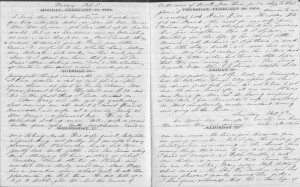
A frequent refrain here at Vita Brevis is that genealogists should consider not just their direct ancestral lines, with a glance at collaterals like siblings or close cousins, but the larger community in which a forebear or collateral relative lived. I was struck by this dictum as I reviewed the Regina Shober Gray diary this winter, as Mrs. Gray lived in a time and place which Jane Austen would have recognized: even the diarist’s closest friends were generally referred to by their married names. Continue reading The wider circle
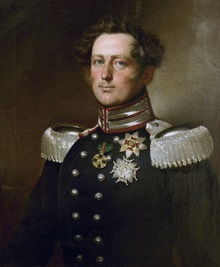
The British constitutional historian Walter Bagehot (1826–1877) wrote that “When there is a select committee on the Queen, the charm of royalty will be gone. Its mystery is its life. We must not let in daylight upon magic.”[1] There is something uncanny about royalty, a mystique that can be hard to value according to its merits. This phrase of Bagehot’s – with its reference to “mystery” and “magic” – came to mind as I was thinking about the question of morganatic marriages in Germany. Continue reading “Daylight upon magic”
 What can I say about a task that falls below cleaning toilets on my list of favorite things to do? However, mastering the discipline of proofreading is imperative. Your audience is counting on you to get it right, no excuses. It is also a Catch-22 – no matter how diligently you proofread, you will miss something and someone will immediately point that out to you as soon as it is published! “Paranoia is good” when it comes to proofreading. Continue reading Composition: Part Two
What can I say about a task that falls below cleaning toilets on my list of favorite things to do? However, mastering the discipline of proofreading is imperative. Your audience is counting on you to get it right, no excuses. It is also a Catch-22 – no matter how diligently you proofread, you will miss something and someone will immediately point that out to you as soon as it is published! “Paranoia is good” when it comes to proofreading. Continue reading Composition: Part Two
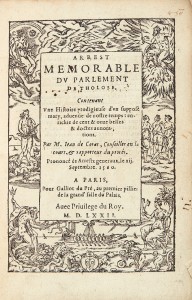
The problem of identity theft is one which has increased significantly over the last several decades; for obvious reasons, it was quite rare in centuries past. This fact makes the story of Martin Guerre all the more remarkable.
Martin Guerre was the son of a man named Sanxi Daguerre (the family later shortened their surname to Guerre), born in the French Basque country in 1525. In 1527, Martin and his parents relocated to the village of Artigat in the County of Foix, less than thirty miles from the border of Spain.[1] Martin’s early years were unremarkable, as he lived a peasant’s life and would have surely faded into obscurity as so many others had if not for a well-documented incident which shaped his adult life. Continue reading Identity and Family Life in 16th Century France